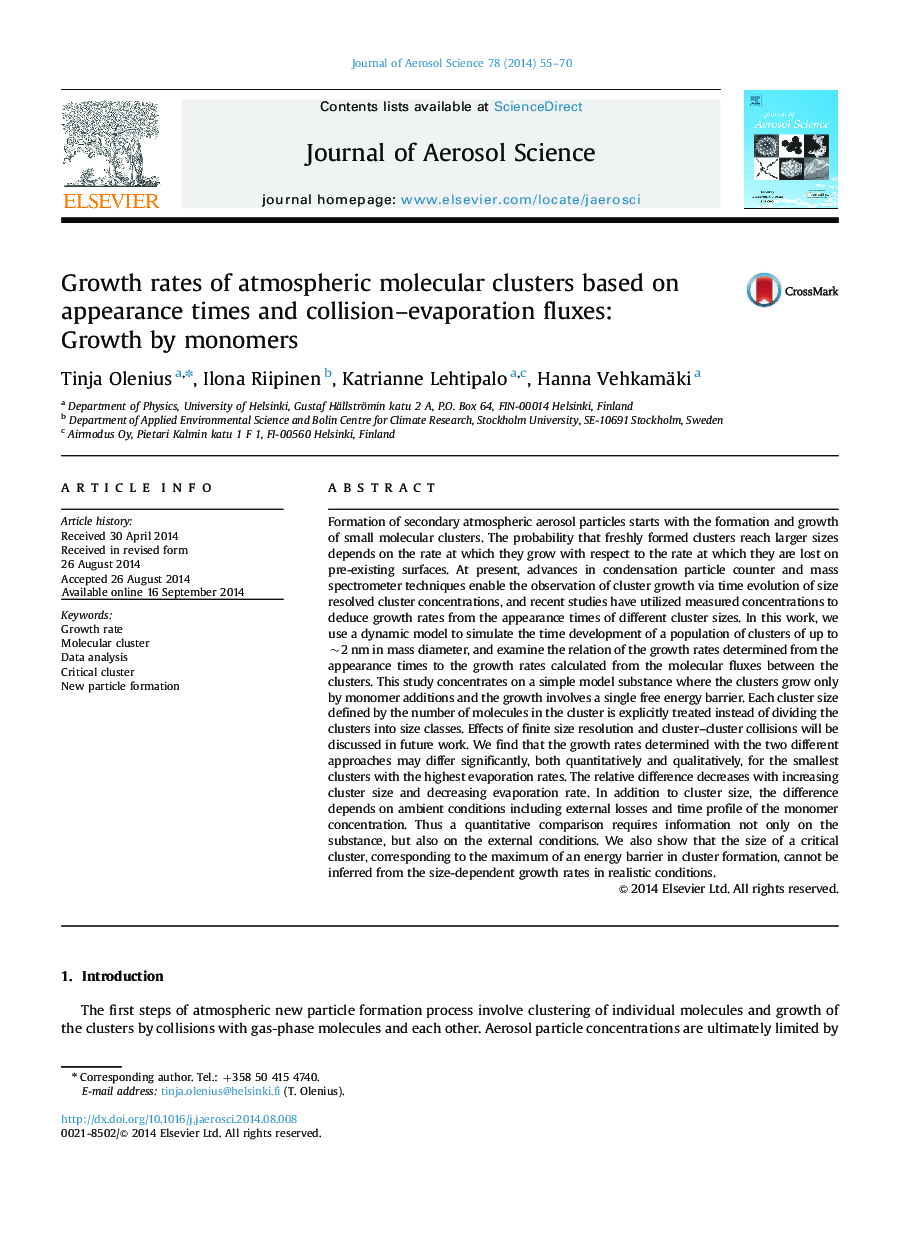| کد مقاله | کد نشریه | سال انتشار | مقاله انگلیسی | نسخه تمام متن |
|---|---|---|---|---|
| 4452329 | 1620745 | 2014 | 16 صفحه PDF | دانلود رایگان |
• We model the time evolution of a population of sub-2 nm molecular clusters.
• Cluster growth rates are determined from (1) appearance times and (2) molecular fluxes.
• Growth rates deduced from appearance times are higher than flux-based growth rates.
• Growth rates are qualitatively affected by ambient conditions such as external sink.
• Cluster evaporation may have a significant effect on growth rates.
Formation of secondary atmospheric aerosol particles starts with the formation and growth of small molecular clusters. The probability that freshly formed clusters reach larger sizes depends on the rate at which they grow with respect to the rate at which they are lost on pre-existing surfaces. At present, advances in condensation particle counter and mass spectrometer techniques enable the observation of cluster growth via time evolution of size resolved cluster concentrations, and recent studies have utilized measured concentrations to deduce growth rates from the appearance times of different cluster sizes. In this work, we use a dynamic model to simulate the time development of a population of clusters of up to ~2 nm in mass diameter, and examine the relation of the growth rates determined from the appearance times to the growth rates calculated from the molecular fluxes between the clusters. This study concentrates on a simple model substance where the clusters grow only by monomer additions and the growth involves a single free energy barrier. Each cluster size defined by the number of molecules in the cluster is explicitly treated instead of dividing the clusters into size classes. Effects of finite size resolution and cluster–cluster collisions will be discussed in future work. We find that the growth rates determined with the two different approaches may differ significantly, both quantitatively and qualitatively, for the smallest clusters with the highest evaporation rates. The relative difference decreases with increasing cluster size and decreasing evaporation rate. In addition to cluster size, the difference depends on ambient conditions including external losses and time profile of the monomer concentration. Thus a quantitative comparison requires information not only on the substance, but also on the external conditions. We also show that the size of a critical cluster, corresponding to the maximum of an energy barrier in cluster formation, cannot be inferred from the size-dependent growth rates in realistic conditions.
Journal: Journal of Aerosol Science - Volume 78, December 2014, Pages 55–70
